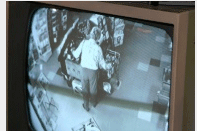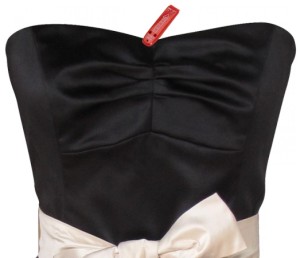How does your store Prevent Shoplifting? There are several things you and your staff can incorporate into your daily tasks and routines to help deter theft. Offering excellent personal customer service, making eye contact, speaking to everyone, and making it known to the person that you are aware of their presence in the store are some free and easy ways to keep theft from occurring. Another option is to post signs throughout the store with various warnings. One of the best choices your business can make, however, is to add a Checkpoint System.
In this age where thieves are so creative and when there are websites devoted to educating people on how to steal without getting caught, your business needs a real plan to Prevent Shoplifting. I was in a small shopping mall today, and the spectrum of protection methods that varied from store to store was eye opening. There is a lot of foot traffic here because it is a tourist destination plus it is a well known college town, and all of these stores line the street behind the campus. In one store they sell a lot of rock and roll memorabilia. There are t-shirts, huge posters, and a lot of collectibles. The merchandise is fairly high retail. For the tourist, there are items here that they will not find close to home and for the college student there are a lot of desirable pieces to decorate their dorm rooms.
Posted throughout this store are handwritten signs of various sizes. Some simply warn of the intention of prosecution for shoplifting while others tell you to “smile, you are on camera”. None are particularly threatening or even convincing. Considering the mint condition and value of some of the collectibles in this store, I was really surprised at how little they have in regards to how they Prevent Shoplifting. Other than the perception that there are cameras in the store, the two people on duty did nothing more than stand behind the counter and chat with one another.
Now if you exit this store and walk down the hall to the next shop door, you walk past Checkpoint System pedestals when you come inside. This is a shop that sells vintage and retro clothing, incense, knitted hats, and other hippie stuff. It was adorable. There were visible hard tags on items that were most likely targets to be picked up and concealed, like the hats and headbands. Plus the dresses and other items to be tried on in the dressing room were all tagged. The clerk spoke as we entered, offered her assistance, and payed attention to those present in her store.
If you really want to Prevent Shoplifting in your business, you have to take it seriously and put forth the effort to protect your inventory and your profits. Investing in a Checkpoint System can pay you back many times by deterring theft from your store, and in some cases, nabbing those that do decide to try it. The pedestals and accompanying tags come in different shapes,sizes, colors, and capabilities, depending on what you need to secure.
For more information contact us at 1.770.426.0547 or Preventshopliftingloss.net








